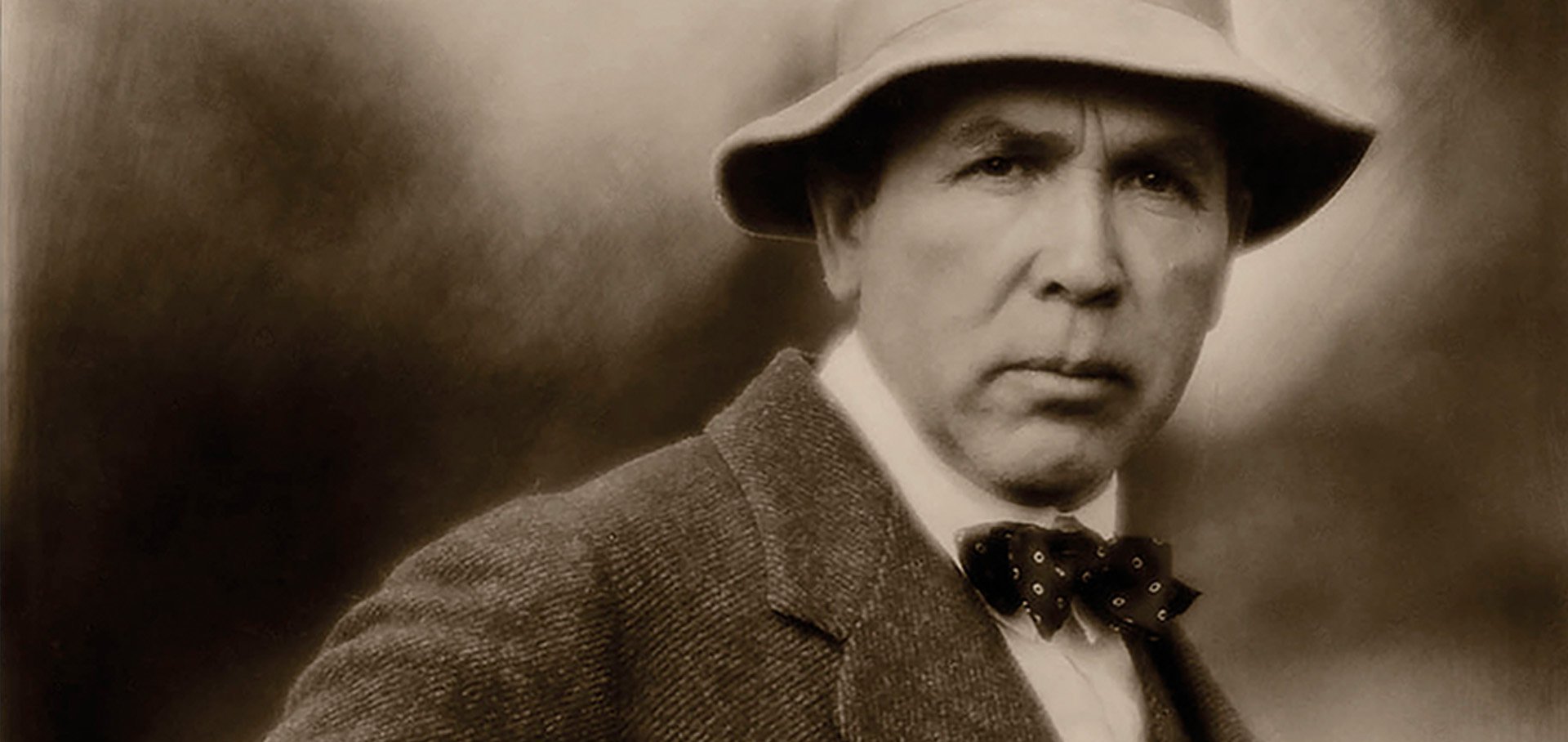Bernhard Hoetger
"I have never wanted to destroy, never wanted to create something new."
Bernhard Hoetger (1874–1949) was a versatile artist and architect whose work was strongly influenced by the ideas of Expressionism. Initially trained as a sculptor, Hoetger combined sculptural elements with architectural concepts, becoming a central figure of the artistic avant-garde around 1900. His friendship with Paula Modersohn-Becker inspired him to move to Worpswede in 1914, where he created significant architectural works between 1914 and 1927, which have profoundly shaped the town to this day.
His most famous work in Worpswede is the Kaffee Worpswede or ›Kaffee Verrückt‹, a striking building with bold forms and a unique structure, which is now considered a symbol of Hoetger’s distinctive artistic approach. Another important work is the Niedersachsenstein, a massive, expressionist monument on Weyerberg, originally conceived as a victory monument and later re-dedicated as a memorial for the fallen of World War I. This monument, with its abstracted eagle symbolizing German strength, sparked intense debates in Worpswede and was ultimately realized with the support of prominent advocates such as Walter Gropius.
Later, Hoetger developed Böttcherstraße in Bremen into an architectural Gesamtkunstwerk, blending expressionist and traditional building styles. There, he created the Paula-Modersohn-Becker-Haus and Haus Atlantis, which are now regarded as outstanding examples of expressionist architecture and continue to represent his visionary integration of art and architecture.
Kaffee Worpswede (Kaffee Verrückt) , 1929


